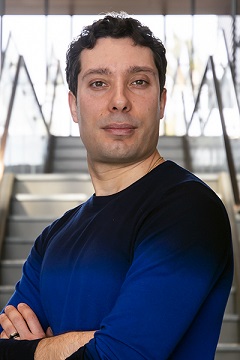Professor Simone Casini has recently completed a didactic project with his students of Italian at the University of Toronto Mississauga. Here’s how he worked on it.
Last fall, the director of Istituto Italiano di Cultura di Toronto, Alessandro Ruggera, invited Betwyll to an event organized for the Week of Italian language in the world when we discussed new strategies to teach and spread our language worldwide. That event led to the idea of designing a didactic project for the students of Italian of the University of Toronto Mississauga, funded by the IIC and implemented by professor Simone Casini, here interviewed.
I used the app Betwyll in a sociolinguistics class, so I chose to focus mainly on grammar and linguistics (on the app students could find short summaries for each of the selected chapters, editor’s note). I chose Ammaniti’s book for two reasons: it is a contemporary author, so his use of the language – though literary – is alive and linked to current issues. Besides, many of my students already knew the book: being familiar with its content, I could make them focus mainly on the language.
The social dimension was one of the main strengths of the project. The students took advantage of Betwyll, because it encouraged a greater engagement, especially when working in groups or with the teacher, which are the two methods I usually use in class. Betwyll proved to be an element that – combined with the others of the class – made it overall even more collaborative, participatory and inclusive than classes adopting a more traditional teaching style.

Simone Casini
Assistant professor
Assistant Professor at the Department of Linguistic Studies of the University of Toronto Mississauga since 2017. He obtained his PhD at the Università per Stranieri of Siena in 2012 with a dissertation on linguistic creativity and superdiversity. He was professor of Linguistics and Semiotics at the Università per Stranieri of Siena and at the Università degli Studi della Tuscia (Viterbo) from 2012 to 2017, besides being a postdoc at the Università per Stranieri of Siena. He was a member of several research group projects. Among his research interests: semiotics; teaching, learning and acquisition of a second language; applied linguistics; sociolinguistics; plurilingualism/multilingualism.


